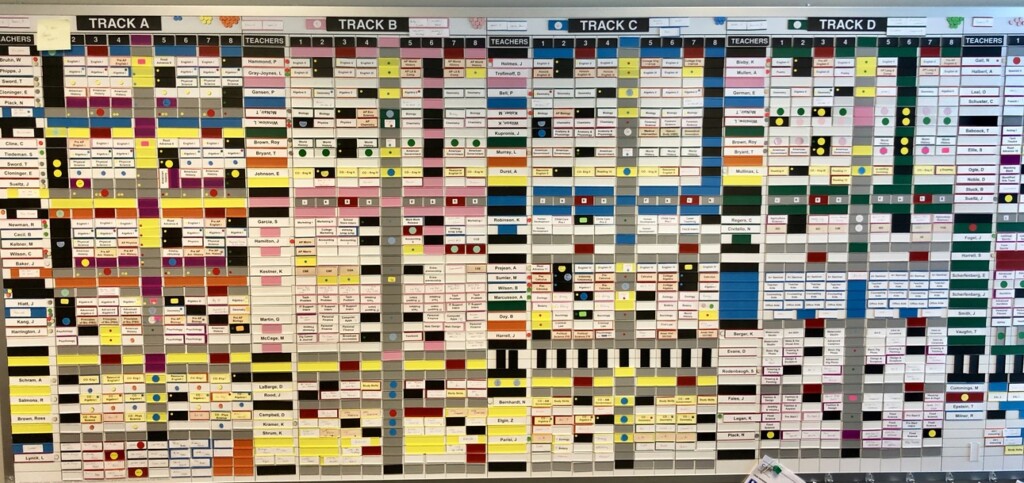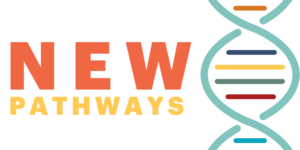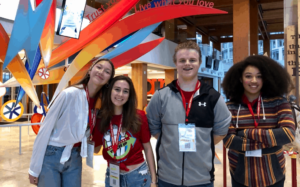Innovative High School Schedules
Key Points
-
High school schedules signal priorities, define opportunities, allocate resources, and influence culture.
-
Here are five sets of examples of innovative high school schedules that expand student opportunities while providing more collaborative time for teachers.

High school schedules are a grand bargain–a Rubik’s cube of compromise. They signal priorities, define opportunities, allocate resources, and influence culture.
Recognizing the important foundational role of schedules, a new administrator asked for examples of schedules that allow for flexibility and innovation yet support teacher time. Following are five sets of examples of innovative high school schedules that expand student opportunities while providing more collaborative time for teachers.
1. Double blocks. Schools in the New Tech Network organize the day into team-taught project-based double blocks with some math courses being taught separately at times. Teachers assess agency, collaboration, and oral and written communication with each project. Double blocks increase team planning time and provide rich cross-curricular projects for students.
2. Varied blocks. Summit Learning campuses use three big project blocks with two smaller blocks for advisory and support (see Summit Atlas for example). The Summit Learning platform allows for a high degree of self-directed learning. They also have 2-week expeditions between quarters (8 weeks/year).
Building 21 is a network of competency-based high schools. Their central unit of design is a studio–a 6-12 week learning experience designed around a set of competencies. Each studio starts with a problem frame and ends with a culminating performance-based assessment. (See Aurora blog).
Double blocks increase team planning time and provide rich cross-curricular projects for students.
Tom Vander Ark
Microschools often use a studio model of scheduling with goal-setting at the start and reflection at the end for accountability. Examples include One Stone and NuVu.
Instructional learning blocks allow for more flexibility with the schedule and increase personalized student schedules.
3. Individualized schedules. The three campuses of Purdue Polytechnic High School in Indiana develop individualized schedules. Students work with their advisory coach to create a schedule that can vary from week to week depending on their individual educational needs. The course of study combines individual personalized learning with client projects. The new PPHS microschool offers even more flexibility. Founder Scott Bess said smaller units facilitate schedule flexibility.
In the last three years of the Jeffco Open School, each student demonstrated readiness to function as an adult by completing six passages. Students work with their advisors to sequence, plan, and conduct passages.
4. Half-time structures. The 100 affiliates of the CAPS Network offer professions-based learning in half-time opportunities for juniors and seniors that retain course transferability but frequently offer more block flexibility for community-connected projects. Iowa BIG in Cedar Rapids is another example of a half-day program for juniors and seniors.
5. Small alternative schools with big blocks. Many small alternative schools use big blocks to facilitate project-based learning. Liberty Academy, north of Kansas City, organizes learning in six-week bursts of interest-based learning often connected to one of 100 community partners. Students set goals in about four success skills during each burst. Teachers in this competency-based school help students to document their growth weekly.
Students in Big Picture Learning schools typically spend two days a week in internships.
Other Resources:
- Apps: abl is a scheduling app that may be useful
- Books: Personalized Learning in a PLC at Work: Student Agency Through the Four Critical Questions
- Podcast: Tom Rooney and Scott Rowe: Buildings are Closed, Learning Goes On! (featuring Huntley’s hybrid flex schedule)
- CAP Report
- Blogs
- Rethinking the Master Schedule in Competency-Based Schools (Building21)
- Building 21’s Studio Model: Designing Learning Experiences for Engagement and Impact
- Timetable Absurdity (Featuring examples from England and Australia)
- Altus Schools: Personalized Learning, Flexible Schedules, Beautiful Spaces, Repeatable Quality








0 Comments
Leave a Comment
Your email address will not be published. All fields are required.